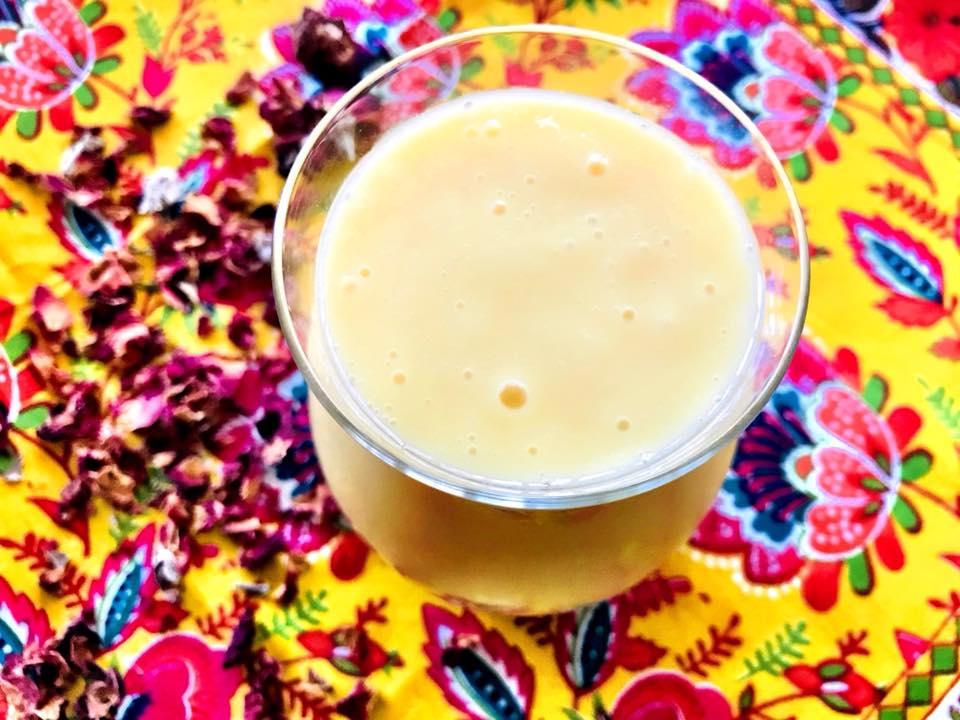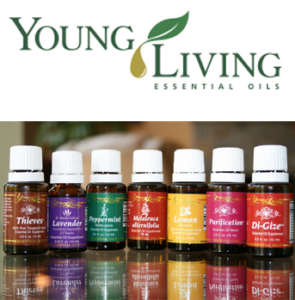Happy Summer Solstice, everyone! Yesterday marked the beginning of summer for everyone in the Northern Hemisphere. This is my favorite season when the sun’s fire and energy are at their peak. It’s pitta season ( hot, light and dry) . For those that live south of the equator ( residents of places like Australia) it is the start of winter or vata season ( cool, light, dry, windy and unpredictable). Whether you are entering summer or into winter, this is a good time to sync the mind and body with the rhythms of nature and establish new, health habits.
To celebrate new beginnings, I prepared one of my favorite summer drinks for breakfast, a Vegan Mango Lassi with Rose Water. To me, summer screams family road trips to the Northwest, wild berry picking, fun times at the pool with the kids, outdoor adventures, long distance runs and MANGOS, tons of MANGOS! I became addicted to mangos after a summer trip to India in 2007.

Lassi is a popular traditional dahi (yogurt)-based drink that originated in the Indian subcontinent. It is a blend of yogurt, water, spices and sometimes fruit. The traditional lassi ( a.k.a “salted lassi” or simply “lassi”) is a savory drink, sometimes flavored with ground and roasted cumin. A sweet lassi, however, contains sugar or fruits instead of spices.
Mango lassi is made from yogurt, milk and mango pulp. My recipe is 100% plant-based, prepared with ripe Champagne mangos, coconut milk yogurt, almond milk, maple syrup and a splash of rose water. It’s cooling, refreshing, succulent and sweet. It’s summer in a cup.
- 1 cup non-dairy yogurt ( I like So Delicious Coconut Milk yogurt)
- 1 cup non-dairy milk *
- 2 medium mangos (very ripe)
- 3 Tbsp maple syrup (or liquid sweetener of your choice)
- 8 ice cubes
- 1/4 tsp rose water
- Peel and slice the mangos. Combine all the ingredients in a high-speed blender. Blend at high speed for 2 minutes.
- * If you want your mango lassi very thick, use 2 cups of non-dairy yogurt and omit the milk.
– Mango was “the fruit of the kings” in ancient India, where princes used to pride themselves on the possession of large mango gardens. Persian traders took the fruit into the Middle East while the Portuguese brought it to Europe and the New World. Mango cultivation arrived in Florida in the 1830s and in California in the 1880s, and now it is also grown in Hawaii, Mexico and South America.
– In Indian scriptures, a woman’s sexuality is represented by the pickled mango. It is one of the most powerful sexual foods for women. Who knew?
– Ever since the Vedic period, mangos have been highly appreciated in Ayurvedic healing and cooking. Ayurveda considers ripe mango sweet and heating. It balances all the three doshas and acts as an energizer. All parts of the tree are used for different purposes. The bark, leaf, flowers, fruit and seed offer a variety of medicinal purposes.
-Mango trees belong to the same family as cashews and pistachios, and can grow to the height of 50 feet in India and Florida too.
– Mangos are rich in antioxidants, such as beta carotene and vitamin C, playing an important role in the prevention of cancer and heart disease. They also contain bioflavonoids, the compounds that help plants capture energy from the sun, and when eaten they aid our immune system. Mangos offer a good supply potassium and fiber and are low in calories. The insoluble fiber, abundant in mangos, aids the elimination of waste from the colon and helps prevent constipation.
For additional recipes using “the fruit of the kings”, check out my Thai Green Mango and Apple Salad.
SOURCES
Maharishi Ayurveda – http://www.mapi.com/ayurvedic-knowledge/plants-spices-and-oils/mango-the-ayurvedic-king-of-fruits.html
Wikipedia https://en.wikipedia.org/wiki/Lassi





